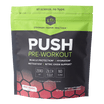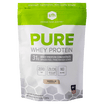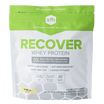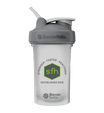10 Benefits of Weight Training
In my best Arnold Schwarzenegger voice, “I WANT TO PUMP YOU UP!”
Many of us think of bodybuilding or powerlifting when we hear about weight training. We think weight training is reserved for those in their “prime,” athletes, men, etc.. The gym can also be an intimidating place. We tend to gravitate towards the cardio equipment because it’s simple and feels like there are fewer eyes on us.
Let’s start by getting this out there: The gym is for everyone! Let’s shout it out from the rooftops! Whether experienced or brand new, man or woman, old or young, weight training can improve one’s quality of life. Sure, some people in the gym can be judgmental, but in truth the majority are incredibly welcoming and will root for you. As someone who goes to the gym nearly every day, when I see a new person in the gym, I quietly root for them and strive to make them feel at home!
So, what does the gym have to offer you?
Depending on your age, gender, and goals this will vary slightly but overall these weight training benefits will be enjoyed across all demographics and walks of life! I especially like number 10!
1. Increased Muscle Mass
One of the primary benefits of weight training is that it can increase your lean muscle mass. But before you say “I don’t want to look bulky,” that doesn’t happen from just weight lifting. Increasing muscle mass is important whether you are a college athlete or a grandparent. More muscle mass helps to decrease body fat, increase our metabolism, and improves posture. We will touch more on the benefits of increased muscle mass in the following points!
2: Elevated Metabolism
When we increase muscle mass, it helps us maintain healthy body weight. BMI (body mass index) on its own is an outdated measure of your physical health. We are more interested in increasing muscle mass and decreasing body fat. When we have more muscle and less fat, this helps to increase our Basal Metabolic Rate, meaning we burn more calories throughout the day.
Disclaimer: A lot of exercise programs exaggerate how much this increases the metabolism. It’s probably only in the low hundreds per day, depending on how much muscle you actually gain (for example, one study found that it increased by an average of just about 245 calories/day in previously sedentary women after 6 weeks of training). But think about compounding interest and how much difference that will make over the years.
3: Improved Performance
If you are an athlete, one of the biggest perks of gaining more muscle mass from weight training is that it may help you run faster, hit harder, jump higher, and outperform your opponents (just look at this 2018 study, which found that lower-limb strength training helped soccer players significantly increase their speed and overall explosiveness on the field!).
For the parent, grandparent, non-athlete, etc., more muscle mass means keeping up with the kids/ grandkids, feeling more energized, walking upstairs without getting winded, and the list goes on!
4: Enhanced Confidence
There’s a saying in sports, “if you look good, you feel good, you play well.” When you get stronger, more capable, and feel good about how you look this will increase your confidence! Exercise also helps to release endorphins which may help improve mood! This study found that resistance exercise training was associated with a significant reduction in depressive symptoms.
5: Decreased Risk of Injury
When you increase muscle mass you create more stability around the joints, which can ward off injuries. If you build a strong back with functional lifts this can help you avoid injury by physically preparing you for playing with your children, moving a couch, pulling weeds, etc. Hello, deadlifts!
6: Boosted Cognitive Function
Exercise may bolster your memory and boost your thinking skills by improving the health of brain cells, improving insulin sensitivity, and decreasing inflammation. Exercise can even help improve cognition in those with dementia. Brain power!
7: Insulin Sensitivity
Speaking of insulin sensitivity: weight training may help lower your blood sugar which in turn could potentially help avoid diabetes. Building your core strength can help improve back pain. Strengthening muscles may potentially help relieve arthritis pain and improve physical function!
8: Stronger Bones
Weight-bearing activities like walking, jumping rope, and weight training can help build bone density which can help avoid bone breaks and fractures. Basically, weight lifting can help us become bulletproof… not really but you see my point.
9: Improved Quality of Life and Increased Longevity
As we age we can lose the ability to be mobile and active. The many benefits of weight training (like increasing mobility, improving psychological well-being, and overall boosting quality of life) mean that hitting the gym can keep us active and give us the ability to remain independent. Life is an adventure, make sure you can stay in the game! I love when I see those in their 70s and 80s still crushing it!
10: Sense of Community
This might be the most overlooked and underrated benefit of weight training. We all need to find a sense of community and share goals with others. At the gym, everyone there is trying to improve themselves, whether it’s a 20-year-old athlete or a 65-year-old grandparent. When you join a local gym and go regularly, people will recognize your face and you will recognize them too. You can notice each other’s accomplishments and improvements.
The gym can be such an encouraging atmosphere, so put yourself out there! Sometimes before you get encouragement, you have to encourage others. Most of the time they will return the favor.
The bottom line: weight training can benefit almost everyone.
No day is better than today. Don’t put off your goals until Monday or January! What step are you going to take today to get closer to your goals?
HINT: Weight training is a great place to start!
Meet the Author

Ben Barker is a fitness coach from Little Rock where he lives with his wife, 3 kids, and their dog, Wrigley. He graduated with a Bachelor of Science in Kinesiology from the University of Central Arkansas and is passionate about helping people push their boundaries of fitness and performance.
*These statements have not been evaluated by the Food and Drug Administration. These products are not intended to diagnose, treat, cure or prevent any disease.
Sources:
- Wewege, M.A., Desai, I., Honey, C. et al. The Effect of Resistance Training in Healthy Adults on Body Fat Percentage, Fat Mass and Visceral Fat: A Systematic Review and Meta-Analysis. Sports Med 52, 287–300 (2022). https://doi.org/10.1007/s40279-021-01562-2
- HRYSOMALLIS, CON1; GOODMAN, CRAIG2. A Review of Resistance Exercise and Posture Realignment. Journal of Strength and Conditioning Research: August 2001 - Volume 15 - Issue 3 - p 385-390
- Nuttall, Frank Q. MD, PhD. Body Mass Index: Obesity, BMI, and Health. Nutrition Today: May/June 2015 - Volume 50 - Issue 3 - p 117-128 doi: 10.1097/NT.0000000000000092
- School of Health Sciences, Kent State University, Kent, OH, USA; 2Department of Kinesiology, Health, and Sport Sciences, the Indiana University of Pennsylvania, Indiana, PA, USA
- Stavres, Jon; Zeigler, McAuley P.; and Pasternostro Bayles, M. (2018) "Six Weeks of Moderate Functional Resistance Training Increases Basal Metabolic Rate in Sedentary Adult Women," International Journal of Exercise Science: Vol. 11 : Iss. 2, Pages 32 - 41. Available at: https://digitalcommons.wku.edu/ijes/vol11/iss2/2
- Hammami, Mehréz1; Negra, Yassine1; Billaut, François2; Hermassi, Souhail1,3; Shephard, Roy J.4; Chelly, Mohamed Souhaiel1,3. Effects of Lower-Limb Strength Training on Agility, Repeated Sprinting With Changes of Direction, Leg Peak Power, and Neuromuscular Adaptations of Soccer Players. Journal of Strength and Conditioning Research: January 2018 - Volume 32 - Issue 1 - p 37-47doi: 10.1519/JSC.0000000000001813
- Harber VJ, Sutton JR. Endorphins and exercise. Sports Med. 1984 Mar-Apr;1(2):154-71. doi: 10.2165/00007256-198401020-00004. PMID: 6091217.
- Gordon BR, McDowell CP, Hallgren M, Meyer JD, Lyons M, Herring MP. Association of Efficacy of Resistance Exercise Training With Depressive Symptoms: Meta-analysis and Meta-regression Analysis of Randomized Clinical Trials. JAMA Psychiatry. 2018 Jun 1;75(6):566-576. doi: 10.1001/jamapsychiatry.2018.0572. PMID: 29800984; PMCID: PMC6137526.
- Chen, N., He, X., Feng, Y. et al. Effects of resistance training in healthy older people with sarcopenia: a systematic review and meta-analysis of randomized controlled trials. Eur Rev Aging Phys Act 18, 23 (2021). https://doi.org/10.1186/s11556-021-00277-7
- Gomez-Pinilla F, Hillman C. The influence of exercise on cognitive abilities. Compr Physiol. 2013 Jan;3(1):403-28. doi: 10.1002/cphy.c110063. PMID: 23720292; PMCID: PMC3951958.
- Ahlskog JE, Geda YE, Graff-Radford NR, Petersen RC. Physical exercise as a preventive or disease-modifying treatment of dementia and brain aging. Mayo Clin Proc. 2011 Sep;86(9):876-84. doi: 10.4065/mcp.2011.0252. PMID: 21878600; PMCID: PMC3258000.
- LaMonte, Michael J., Steven N. Blair, and Timothy S. Church.Physicalactivity and diabetes prevention.J Appl Physiol99: 1205–1213, 2005;doi:10.1152/japplphysiol.00193.2005
- Welch N, Moran K, Antony J, et alThe effects of a free-weight-based resistance training intervention on pain, squat biomechanics and MRI-defined lumbar fat infiltration and functional cross-sectional area in those with chronic low backBMJ Open Sport & Exercise Medicine 2015;1:e000050. doi: 10.1136/bmjsem-2015-000050
- Latham N, Liu CJ. Strength training in older adults: the benefits for osteoarthritis. Clin Geriatr Med. 2010 Aug;26(3):445-59. doi: 10.1016/j.cger.2010.03.006. PMID: 20699165; PMCID: PMC3606891.
- Hong AR, Kim SW. Effects of Resistance Exercise on Bone Health. Endocrinol Metab (Seoul). 2018 Dec;33(4):435-444. doi: 10.3803/EnM.2018.33.4.435. PMID: 30513557; PMCID: PMC6279907.
- Fragala, Maren S.1; Cadore, Eduardo L.2; Dorgo, Sandor3; Izquierdo, Mikel4; Kraemer, William J.5; Peterson, Mark D.6; Ryan, Eric D.7. Resistance Training for Older Adults: Position Statement From the National Strength and Conditioning Association. Journal of Strength and Conditioning Research: August 2019 - Volume 33 - Issue 8 - p 2019-2052doi: 10.1519/JSC.0000000000003230

















